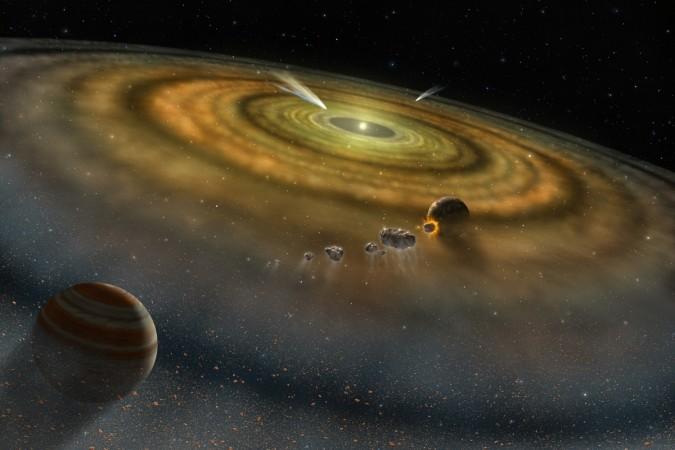
The Solar System was, at one point of time just the Sun with swirling clouds of debris and no planets in sight called the circumsolar disk. Not much is known of this phase of the Sun, and most of the celestial bodies that were formed in the following millenniums do not contain as much information and have since been altered by their own environments.
Asteroids are one of the best records for looking into the past and asteroid Vesta, in particular, has been of interest to astronomers, reports the National Institute for Astrophysics (INAF). Vesta has a thin volcanic crust and it has managed to survive impacts which is a testament to just how violent the early Solar System must've been.
However, seeing what has been learned from the NASA Dawn mission—exploring asteroid Ceres, astronomers are saying that Vesta's "memory" might not be as sound as once believed.
Impact craters on Vesta have been growing and getting more bigger over the time and the old ones, about 4 billion years old, could have been either erased or overshadowed. However, the thickness of Vesta's outer layers makes information from the crust, bits of which have actually landed on Earth vague at best, notes the report.
According to the results of an international team of researchers at INAF-IAPS, "It is all about changing our perspective and, instead of focusing only on the destructive effects of impacts as we have done so far, consider the constructive ones too", lead author Diego Turrini explains.
"Each impact removes material from the surface of Vesta, but at the same time brings new material to it" explains Vladimir Svetsov, co-author of the study. "By balancing the two effects it is possible to extract more and more precise information from the data of Dawn and HEDs (howardite–eucrite–diogenite)."
Laboratory studies carried out on HED meteorites have revealed, that in recent years, some of them present what the researchers call "superabundances" of water and of siderophilic—elements that are close to metals, are expected only to be found at the core elements. They were, as a result, been able to find out just how prevalent these elements are on Vesta's crust.
Using this information, it could be possible to study the history of the Solar System by simply studying how every impact that the asteroid received could have potentially brought some of its core elements to the surface.
Every impact will change the composition of the crust, by using Dawn data, it could be possible to look back on how the environment would have been in the Sun's youth.
"Instead of focusing on the direct search for the true evolutionary path of the primordial Solar System, in our study we use a 'Sherlock Holmes' approach showing how the destructive and constructive effects of impacts can be used to exclude all impossible scenarios (as incompatible with observational and laboratory data), leaving only the realistic ones", explains Guy Consolmagno, co-author of the study.
"The Vesta we found when Dawn arrived was different from what we had expected, but we have to deal with the Vesta that is, not the Vesta that we thought".
Svetsov goes on to explain that while the results obtained by researchers show how this approach, for example, not only helps determine whether Jupiter moved from inner to outer Solar System, but also allows to find by how much it migrated. "While a modest migration of Jupiter by about 0.25 au (astronomical unit, the distance between the Earth and the Sun) is consistent with the data, larger migrations (up to 1 au) or no migration at all are to be excluded".
The main goal of this study, says Turrini, was to provide astronomers around the world with a new method to investigate. Scientists all over the world studying the origins of the "Solar System can now use it to verify their models and evolutionary scenarios".
The study was first published in the journal Icarus.

















